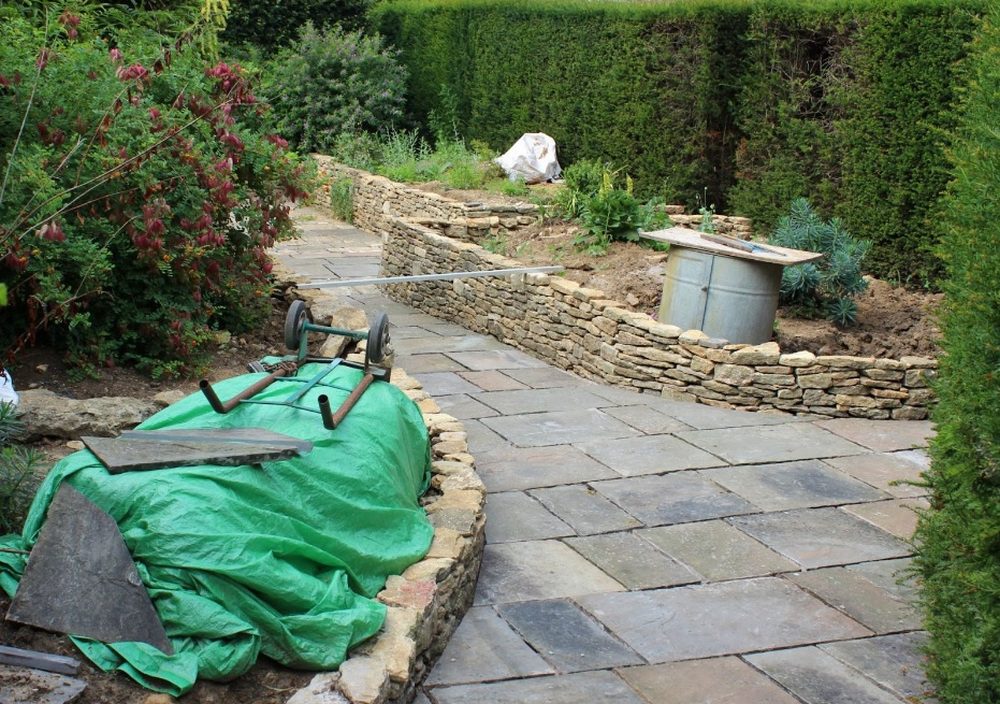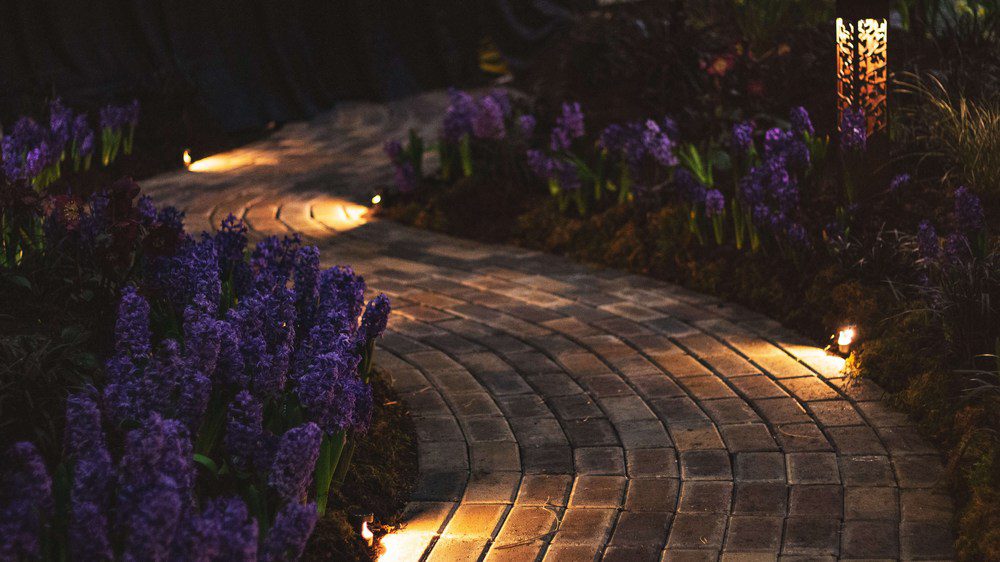Get the week's most popular posts delivered to your inbox.
Our weekly update is free yet priceless and you're less than a minute away from getting the current edition.
In the unlikely event we disappoint, you can unsubscribe with a single click!
Last Updated on February 14, 2025 by teamobn
Everyone’s garden is different. Some people have perfectly flat land to landscape in any way they please, while others have gentle or dramatic slopes, and creating a garden on a slope can be much harder to work with.
Contents
How to Craft an Optimal Landscape on a Terrain with Inclination
When creating the perfect landscape on a sloped terrain, there are several considerations that must be made. An incline can be made into a lovely and useful landscape that is both aesthetically pleasant and environmentally sustainable with careful planning and execution.
As challenging as sloped sections can be to landscape, you still have plenty of options. You might be inspired to create your dream garden with some of the following ideas.
Create a Raised Seating Area
If you only have a gentle slope to contend with, but it still proves challenging and unsafe to mow, create a raised seating area for your whole family to enjoy. Identify where your lawn starts to slope, mark out a place to add stairs to access the upper portion, and level out the top area of the slope.
Once you’ve leveled the top of the slope, you can get to work creating your ideal outdoor seating area. Get creative with hardscape materials like rock and stone, or install pavers or a concrete foundation for your dining set to sit on. The options are endless when it comes to creating your ideal raised seating area. 
Build Steps and Raised Garden Beds
Walking up a sloped backyard isn’t always easy, especially in winter. Grass can be slick when wet, and it might even be muddy and slippery when the lawn area is well-used by pets and children. Transform this previously hazardous part of your property with steps and raised garden beds.
Start by sketching the area you have to work with on a piece of paper and drawing steps running through the center of the slope. You might then find it much easier to plan out raised garden beds on either side.
If you’re worried about your garden working in harmony with the rest of your property, try to utilize the same materials used to build your home or directly contrast them. For example, if you have a brick home, create brick steps and garden boxes.
If bricks aren’t within your budget, use a material that can beautifully contrast against the bricks, such as painted or stained wood. 
Develop a Pathway
Sometimes, a slope can seem more problematic than it actually is because you don’t have a defined pathway to take you from the bottom of your property to the top. Install one, and your entire yard might seem more cohesive and well-planned.
There are many different pathway materials to choose from, such as rocks, concrete, gravel, and pavers. When you get to a particularly steep part of your property, you can transition the pathway into a matching step or staircase.
Adding a garden path to your property can also be helpful if you’re having trouble planning how you want your entire yard to look. Once you’ve created a walking area, you can start filling the surrounding space with gardens, activities, and entertainment areas.
Build Multiple Terraces
While you might need to hire an excavator and excavator attachments to build terraces, it can be worthwhile when you no longer have to contend with an uninspiring and dull slope. Terraces add character, depth, and style to any property and don’t have to be as complicated as you think.
It all starts with planning. Make sure you have all the equipment you’ll need, like an excavator with a ditch-cleaning bucket, and make sure you’re aware of all local rules surrounding building works. You can then work out the preferred height of your platform wall.
Once you know how tall you want it to be, build the first retaining wall at the bottom. This can require digging a trench about 10 inches deep and pouring approximately four inches of gravel into it before placing your first stone layer.
You can then build it to the required height, fill it with dirt and gravel, and level out the first terrace. Once the first one is complete, you can repeat the process as you work your way up the slope. 
Keep It Simple
When you start looking for sloped garden ideas online, it’s easy to become overwhelmed by all the options that have the potential to cost tens of thousands of dollars. While there’s no denying that professionally landscaped yards are beautiful, not everyone has a large backyard budget.
There is nothing wrong with keeping it simple while still ensuring a beautifully aesthetic space. Identify where your property starts to slope and create a simple set of stairs out of wood, concrete, or rocks to allow easy access to the sloped area.
If the slope isn’t too dramatic, you might then like to simply mow a single strip from the stairs to the end of your property for easy access.
If the rest of your sloped section is bare, scatter wildflower seeds to create a beautiful, maintenance-free wildflower garden. Not only will it look bright and beautiful, but it will become a favorite area for your local bee populations.
Install Retaining Walls
Retaining walls can be a worthwhile consideration when you have a significantly sloped property that is becoming increasingly difficult to manage. A simple blockwork wall can be the answer if you need something strong to hold the soil up and can be painted to suit your home.
However, it’s important to plan these carefully and ensure appropriate drainage channels are in place. Alternatively, you can look at stone-filled gabions. They usually consist of wire cages filled with stones that look attractive and let rainwater filter through.
Typically, stone-filled gabions are more affordable than blockwork walls but can be challenging to install without heavy machinery.
Don’t Aim for a Perfect Lawn
Many people’s idea of a dream garden on a sloped section is a lush, green lawn. Having a simple lawn is budget-friendly, low-maintenance, and beautiful in its simplicity. However, it’s not always possible to achieve a perfect lawn when your section isn’t level or consistently curved in its sloped form.
Not only can lawn mower blades scalp the ground, causing unattractive dirt patches, but they can also be dangerous to operate. Grass can be slippery when wet, and sloped ground can also be a trip hazard. Sometimes, sectioning your lawn and creating defined areas can be a safer and better option than leaving your entire property as grass.
To Sum It Up
Creating your dream garden on a sloped section won’t always be easy, especially when you’ve never worked with a slope before. However, by taking the time to plan, speak to experts, and learn more about these options above, you might be pleasantly surprised by what you’re able to create.
Get the week's most popular posts delivered to your inbox.
Our weekly update is free yet priceless and you're less than a minute away from getting the current edition.
In the unlikely event we disappoint, you can unsubscribe with a single click!






